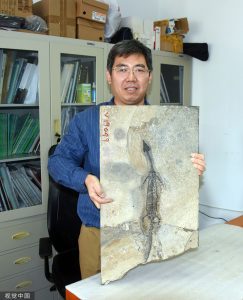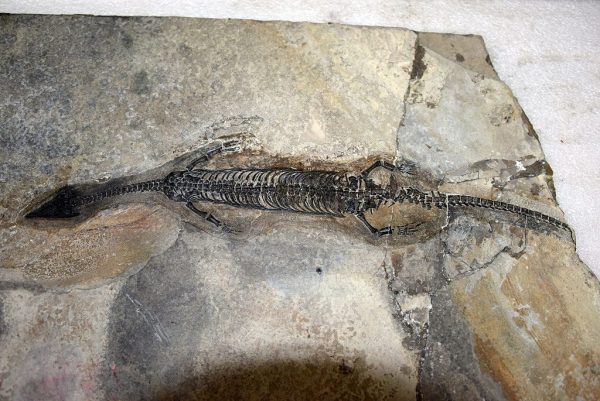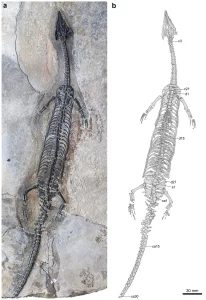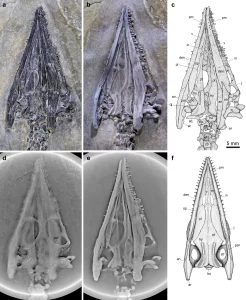Chinese paleontologists have made an exciting discovery in Luoping County, southwest China’s Yunnan Province. They have uncovered the fossil of a new marine reptile species, named Luopingosaurus, which dates back 244 million years. The findings were published in the journal Scientific Reports.

Luopingosaurus is identified as a lizard-like marine reptile belonging to the pachypleurosaur group. It features a long, pointed mouth and measures over half a meter in length.
Its most distinctive characteristic is its elongated snout, which makes up more than half of its head. Researchers believe that this adaptation facilitated the reptile in catching prey by reducing resistance during pursuits in the water.

The discovery of Luopingosaurus provides valuable insights into the early evolution of pachypleurosaurs. The study highlights the reptile’s forelegs, which had multiple phalanges, contributing to more flexible flippers for changing direction in the water. This finding represents the oldest fossil evidence of Sauropterygia with multiple phalanges.

Researchers also observed changes in the lateral grasping ability of pachypleurosaurs during their evolutionary process. While the ability to grasp small fish and other prey increased, the efficiency of swallowing after grasping gradually decreased.
The Luoping Biota, where the discovery took place, provides a unique window into the recovery and radiation of Triassic marine ecosystems.

The region was a shallow marine environment during the Triassic period, housing various marine life around 10 million years after the mass extinction event at the end of the Permian period.
This discovery adds to the growing understanding of ancient marine life and the diverse species that inhabited the oceans during the Triassic period. It also highlights the importance of fossil findings in unraveling the mysteries of prehistoric life and evolution.






